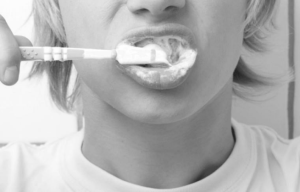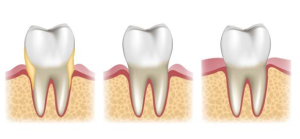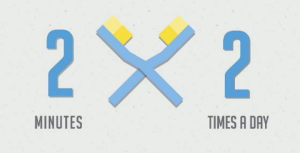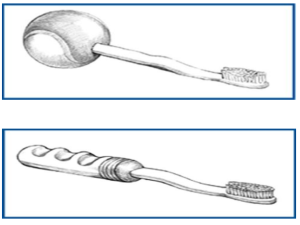
Maintaining excellent oral hygiene is vital for preventing dental diseases such as cavities, gingivitis, and periodontitis. Proper toothbrushing is a fundamental aspect of this preventive care. This detailed guide will explore essential strategies for brushing your teeth, comprehensive oral hygiene instructions, and the pros and cons of manual versus electric toothbrushes.
Why Do We Brush Teeth?

At its core, we brush teeth to prevent plaque and tartar from forming on teeth. Plaque biofilm, a sticky layer of bacteria, forms on teeth and gums, leading to various oral health issues if not adequately controlled. The most common of these issues is dental caries, better known as cavities. The primary methods for controlling plaque biofilm are:
- Mechanical Control: Involves the physical removal of plaque through brushing, which will be the focus of this guide. It can also include the use of floss or tongue cleaners.
- Chemical Control: Utilizes mouthwashes and other chemical agents to complement mechanical methods, typically discussed in more advanced dental care settings.
How to Brush Teeth Properly
Brushing should be tailored to each individual’s needs, considering factors like dental structure, the presence of orthodontic appliances, and personal dexterity. Proper brushing involves the following steps:
- Choosing the Right Toothbrush: Select a toothbrush that is comfortable and effective for personal use.
- Technique: Utilize the Modified Bass technique or other recommended methods listed below.
- Frequency: Brush at least twice a day, two minutes each time, ideally after meals. Brushing more than two times a day runs the risk of injuring your gum tissue and causing gum recession.
Choosing the Right Toothbrush
Types of Toothbrushes
- Soft Bristle: Generally recommended by dentists as they are gentle on gums and effective in cleaning.
- Medium and Hard Bristles: These are less recommended due to the potential for gum damage and enamel wear. Hard bristles are increasingly difficult to find in stores for this reason.
Bristle Characteristics
- Firmness: Soft bristles are preferred for most users.
- Angle: Angled bristles can improve cleaning efficiency by reaching more areas.
- Layers: Multiple layers of bristles enhance plaque removal.
Manual vs. Electric Toothbrushes
Generally, if cost and power sources allow for it, studies have shown that electric toothbrushes are generally more effective at reducing plaque and gingivitis than manual toothbrushes. It is especially beneficial for individuals with limited dexterity or orthodontic appliances. Additionally, oscillating toothbrushes are more effective than ultrasonic toothbrushes.
Toothbrushing Techniques
Modified Bass Technique
The Modified Bass technique is the most recommended method for most patients due to its effectiveness in removing plaque and preventing gum disease. The steps are:
- Position the Toothbrush: Hold the toothbrush so that the bristles are at a 45-degree angle to your gums. Imagine you’re aiming the bristles towards where your teeth meet your gums.
- Brush Gently: Apply gentle pressure so the bristles slide slightly under the gumline. You should feel the bristles on your gums without causing discomfort.
- Small Strokes: Use short, back-and-forth motions to brush, focusing on one or two teeth at a time.
- Sweep Away Plaque: After using the small strokes, sweep the brush away from your gums to remove the plaque and bacteria.
- Continue on All Surfaces: Do the following technique on all tooth surfaces for two minutes two times a day. Increasing overall time spent brushing teeth will increase plaque removal. However, it also increases gum damage and recession.
- Do NOT Rinse With Water: Recent recommendations suggest spitting without rinsing after brushing. According to the British Dental Journal, not rinsing allows the fluoride in the toothpaste to remain on the teeth longer, enhancing its cavity-preventive effects.
Other Techniques
While the Modified Bass technique is highly recommended, other methods include:
- Fones Rotary: Uses circular motions, suitable for young children learning to brush.
- Stillman: Involves placing the bristles on the gums and sweeping them over the tooth surface.
- Charters: Directs bristles toward the chewing surface, suitable for orthodontic patients.
How Long and How Often to Brush Your Teeth

How Long Do You Brush Your Teeth?
The amount of time spent brushing your teeth is crucial for effective plaque removal and maintaining oral health. Here’s what you need to know:
- Recommended Time: Dentists generally recommend brushing your teeth for at least two minutes each session. This duration ensures that all tooth surfaces are adequately cleaned.
- Quadrant Approach: To make sure you’re thorough, divide your mouth into four sections: upper right, upper left, lower right, and lower left. Spend about 30 seconds brushing each quadrant.
- Proper Technique: Focus on using the right technique, such as the Modified Bass technique, which involves gentle, short strokes. Rushing through brushing can lead to missed areas and ineffective cleaning.
How Many Times a Day Should You Brush Your Teeth?
How often you brush your teeth is equally important. Here’s the recommended frequency for optimal oral health:
- Twice Daily: The Canadian Dental Association and other dental health organizations suggest brushing at least twice a day, typically in the morning and before bed. This helps remove plaque and bacteria that accumulate throughout the day and night. While more frequent brushing can be beneficial, studies indicate that brushing more than twice daily does not significantly reduce the risk of dental issues if proper technique is used.
- After Meals: For added benefits, especially if you have eaten sugary or acidic foods, consider brushing after meals. However, wait at least 30 minutes after eating to prevent enamel damage from brushing too soon after consuming acidic foods.
- Consistency and Technique: Maintaining a regular brushing routine is key to preventing dental issues like cavities and gum disease. Consistency helps ensure plaque and bacteria are kept at bay. Additionally, technique is more important than frequency.
Specific Cases
Brushing Teeth with Braces

Patients with braces or other orthodontic appliances need to be extra diligent with their brushing techniques. In addition to using the abovementioned technique, supplemental tools like interdental brushes and water flossers can help clean around brackets and wires.
Brushing Teeth with Arthritis or Parkinson’s Disease

For individuals with reduced dexterity, electric toothbrushes are highly recommended. These brushes can simplify the brushing process and ensure thorough cleaning without the need for complex manual techniques. If these are cost-prohibitive, alterations can be made to toothbrushes, such as those in the picture above, to help patients brush.
Conclusion
Effective toothbrushing is a cornerstone of good oral hygiene and prevention of dental diseases. By following the guidelines on mechanical plaque removal, selecting the appropriate toothbrush, and employing the correct brushing techniques, individuals can significantly improve their oral health. By adhering to these practices, you can ensure optimal oral health and a bright, healthy smile.
Disclaimer
The contents of this website, such as text, graphics, images, and other material are for informational purposes only and are not intended to be substituted for professional medical advice, diagnosis, or treatment. Nothing on this website constitutes the practice of medicine, law or any other regulated profession.
No two mouths are the same, and each oral situation is unique. As such, it isn’t possible to give comprehensive advice or diagnose oral conditions based on articles alone. The best way to ensure you’re getting the best dental care possible is to visit a dentist in person for an examination and consultation.
SAVE TIME AND MONEY AT ANY DENTIST

Less dental work is healthier for you. Learn what you can do to minimize the cost of dental procedures and avoid the dentist altogether!

